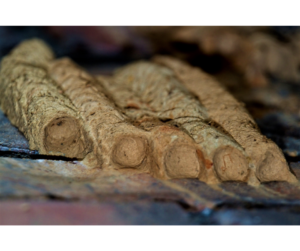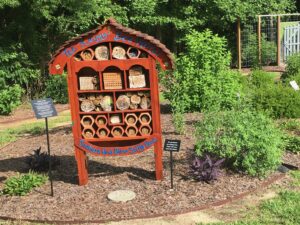Creating a Pollinator Garden
go.ncsu.edu/readext?801779
en Español / em Português
El inglés es el idioma de control de esta página. En la medida en que haya algún conflicto entre la traducción al inglés y la traducción, el inglés prevalece.
Al hacer clic en el enlace de traducción se activa un servicio de traducción gratuito para convertir la página al español. Al igual que con cualquier traducción por Internet, la conversión no es sensible al contexto y puede que no traduzca el texto en su significado original. NC State Extension no garantiza la exactitud del texto traducido. Por favor, tenga en cuenta que algunas aplicaciones y/o servicios pueden no funcionar como se espera cuando se traducen.
Português
Inglês é o idioma de controle desta página. Na medida que haja algum conflito entre o texto original em Inglês e a tradução, o Inglês prevalece.
Ao clicar no link de tradução, um serviço gratuito de tradução será ativado para converter a página para o Português. Como em qualquer tradução pela internet, a conversão não é sensivel ao contexto e pode não ocorrer a tradução para o significado orginal. O serviço de Extensão da Carolina do Norte (NC State Extension) não garante a exatidão do texto traduzido. Por favor, observe que algumas funções ou serviços podem não funcionar como esperado após a tradução.
English
English is the controlling language of this page. To the extent there is any conflict between the English text and the translation, English controls.
Clicking on the translation link activates a free translation service to convert the page to Spanish. As with any Internet translation, the conversion is not context-sensitive and may not translate the text to its original meaning. NC State Extension does not guarantee the accuracy of the translated text. Please note that some applications and/or services may not function as expected when translated.
Collapse ▲I read an article recently from National Wildlife Federation announcing that June is Pollinator Month. Of course, they were asking the reader to certify their garden as a Certified Wildlife Habitat with the encouragement to purchase a sign to announce to the world, or at least to the neighbors, that this yard is a certified wildlife habitat. In case you missed it, the important part of that announcement is that June is Pollinator Month.
I started wondering what exactly would it take to create a pollinator garden? How much space would I need? Is this something that will take years, decades or centuries to create? Would my little yard even make a difference?
Like a good extension agent, I did some research and found a short video with brief information on several different topics and links to websites with even more information. This website seemed to focus more on plants than on the whole lifestyle of the pollinator. Flowers are a great source of pollen and nectar for the pollinators, but what about their other needs. Pollinators also need a place to shelter when it’s windy or raining, they need water to stay hydrated, and they need a place to raise their young. They can’t get all they need from flowers.

Staying hydrated
When we look at the list of needs for pollinators, it may seem that it would take a lot of space to create a pollinator garden, however, that simply isn’t the case. Most gardeners, will likely have many of the requirements already in place. To provide water, a birdbath or a plant saucer with water and some pebbles for landing pads will provide the needed water. For a place to shelter from wind or rain, a dense shrub or some tall, clumps or grass will do.
The place to raise young might be a little more difficult to create. Different pollinators use different types of sites to raise their young. Mud daubers build nesting tubes out of mud. Carpenter bees drill holes (tunnels really) into wood to create a nest. Ground nesting bees find a bare spot in the garden and dig a cave to create a nest. There are also bees that find natural cavities to create nests in. One year, my wind chimes didn’t chime anymore and when I looked inside the pipes, they were filled with bee nests. There are also bees like honey bees that need to live in a hive.

Mud dauber nesting tubes
It would be a daunting task to create all these different types of dwellings. Not so much if the focus was on one type of nesting site at a time. A bare patch of ground (actually the area where there are daylilies for example) could create the first one or two nesting sites for ground nesting bees. The next year it expands to 10 or 20 sites and the following year growing to nearly 100 nesting sites. Ground nesting bees are active in early spring before the daylilies begin to grow so they are done building their nesting sites by the time the daylily canopy covers up their work. To help bees that nest in tubes, set out a bundle of straws or bamboo shoots. A block of untreated wood will become a home for wood boring bees. These can be scattered throughout the yard or build. your own bee hotel.

Bee Hotel
In the hopes of creating a pollinator garden, don’t forget that pollinators need more than pretty flowers to live their lives. They will also need water, shelter, and a place to raise their young. When creating a pollinator garden, consider including some of these other elements to keep the pollinators around for a lifetime.




